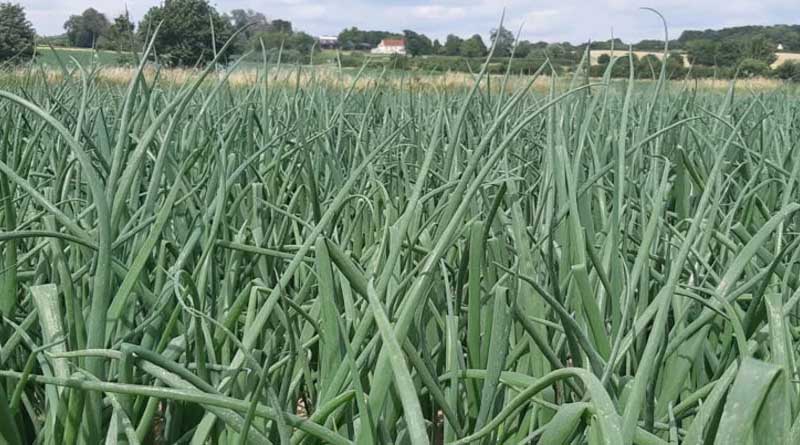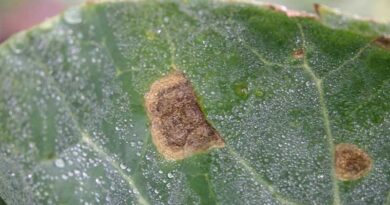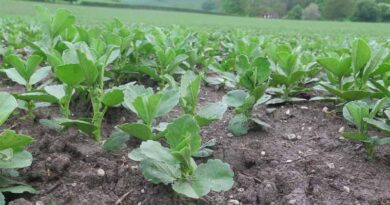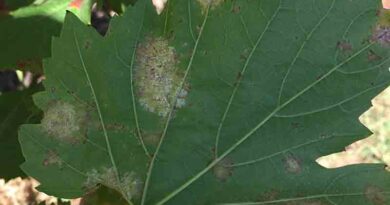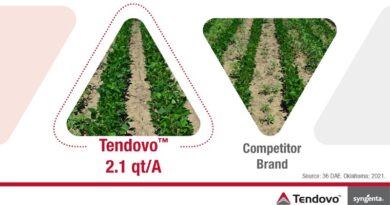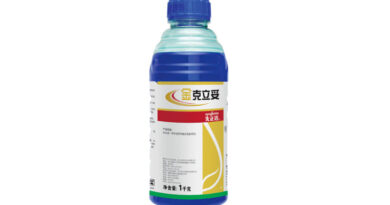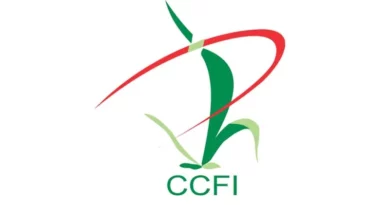Onion Downy Mildew Risk Rising
24 April 2024, UK: New Syngenta onion disease trials results have shown the crucial importance of an effective season-long fungicide strategy in the increasingly challenging conditions for downy mildew, reports Technical Manager, Simon Jackson.
Fungicide trials, grown in Suffolk last year by Deben Agronomy, showed a programme alternating Orondis Plus + Amistar with mancozeb was the only treatment to keep crops clean of onion downy mildew through assessments in July and August.

Suffolk trials assessed in mid-August pinpointed outstanding control of onion downy mildew with Orondis Plus + Amistar (above, right), compared to untreated (left).
The Orondis Plus + Amistar strategy, in a high-pressure situation and started relatively late in the season to truly test fungicide performance, yielded over 50 t/ha (+ 26%), compared to under 40 tonnes in the untreated plots. Importantly, the greatest uplift was in the 60-90mm size grade.
Last season’s weather patterns highlighted the now typical prolonged and repeated periods of conditions conducive to downy mildew (Fig 1).
The combination of high humidity and relatively cool temperatures over successive days can quickly ramp up intense disease pressure.

Fig 1. Periods of high humidity and relatively cool temperatures indicate repeated high downy mildew pressure points in Suffolk last year.
“That becomes more serious once the crop closes over and humidity levels remain higher for longer within the leaf canopy, particularly with irrigation scheduling,” pointed out Simon.
“However high pressure early in the season, as experienced in June last year, could initiate infection that will continue to sporulate and spread secondary infection widely across crops when conditions are favourable.”
Overwinter threat
The downy mildew pathogen can survive overwinter as oospores in the soil, particularly in this season’s wet conditions and relatively mild temperatures.
There is also the threat from infection in September sown overwintered crop, where early conditions can initiate disease development; spores created from early lesions can spread for miles in the wind.
Simon pointed out that this spring’s later sown crops will need to put on rapid compensatory growth, to get to the all-important five true leaf stage by the longest day in June.
That could result in softer, lush growth, which can be more vulnerable to infection, he warned.
Furthermore, where intensive herbicide programmes have been applied late this season, following difficult spring conditions for pre-ems, there is a risk dewaxing leaves that could make plants more susceptible to downy mildew infection.
Simon advocated onion growers and agronomists should be ready to start their downy mildew fungicide strategy in mid-June, with a priority for Orondis Plus + Amistar through July, when canopy development is at its quickest and thickening rapidly.
Up to three applications of Orondis Plus + Amistar can be made in onion crops, subject to compliance with FRAC strobilurin resistance management guidelines and 14-day Amistar pre-harvest interval.
Also Read: ADAMA Launches New Cereal Fungicide Avastel®
(For Latest Agriculture News & Updates, follow Krishak Jagat on Google News)

